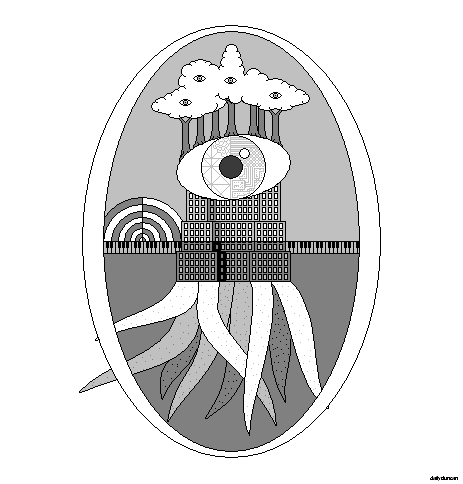Although it’s completely unnecessary for survival, most consider art to be an essential part of human life. After all, it is one of the five pillars of civilization. Despite the importance we place on it, offering an adequate description of art can be difficult. Most of us have a general understanding of art, pointing to classical paintings and sculptures such as Michelangelo’s Sistine Chapel ceiling and statue of David as examples, but what about more contemporary and peculiar pieces like Jackson Pollock’s No. 5 or Ellsworth Kelly’s Cowboy?
One of the ramifications of a poor definition of art is the frivolous labeling of individuals as artists. Classic forms of art include painting, sculpting and pottery, music, dance, acting and literature, but the term has been increasingly used to include modern vocations and hobbies such as photography, graphic design, 3D modeling, architecture, tattooing and rap. In its advertisements, Subway even claims that its employees are sandwich artists, stretching the concept of art so thin as to bankrupt it of meaning.
While it’s true that there is a degree of creativity and skill involved in nearly all aspects of life, that alone doesn’t make it art. If we include every craft, structure, schematic, machine, weapon, tool, toy, sport, code and clothing in the definition of art, then every person on Earth is an artist (as well as most animals). In that case, we would need to create a new term to describe works done for aesthetic and expressive purposes and another to describe those who devote themselves to their creation. However, creating a new word simply because its definition has been corrupted by misuse is no way to build a language.
Debate over the legitimacy of various artists and expressions can be intense, with parties citing arbitrary qualifications to suite their particular understanding of art. However, without a universally-accepted set of criteria to recognize it, how can one claim that something is or isn’t art? Although placing a restrictive definition on something as diverse and interpretive as art may seem impossible, perhaps it’s possible to establish some general guidelines. By looking to history for examples, we can glean at least four crucial criteria:
- Originality
- Meaning
- Skill
- Purpose
In order to qualify as art, a piece must be original. If a painter were to merely reproduce a famous painting, such as Picasso’s Guernica, it would not be heralded as a great work but merely an homage. In addition, a mass-produced item, such as a dime, may be beautiful, but it is not unique and therefore can’t be art. It’s also important to note the difference between an artist and a performer, since a performer is not necessarily generating something new. Although a performance may be meaningful and skillful, displaying another’s creation does not make the performer an artist.
The second criteria of art is meaning. The piece must be an expression of an emotion, event or experience, and it must attempt to draw some kind of reaction from its audience. Merely displaying mundane objects like a cotton swab, rock or hammer does not conjure an emotional response. Some may argue that mundane objects can have exceptional meaning, but this meaning is only created by the perception of the object is art, not from the object itself. If placing everyday objects in an art gallery makes them art, then everything on Earth is art, and we run into the same vocabulary issues again. It is possible for mundane objects to be incorporated into art, but this must be done with an intent to convey a greater meaning than that of the object itself.
Another important feature of art is that it requires skill to create. If a piece of art can be easily and quickly produced by most people, then it can’t be art, no matter how unique and meaningful it is. This is why some feel that advanced tools, such as computers and painting machines, erode the legitimacy of art. Consider Microsoft’s Songsmith software, which automatically generates music to accompany a vocal recording. Using this program, a few simple clicks can produce an elaborate, unique song. However, most would agree that music produced so easily is not art, for the artist did not invest time, energy or emotion into its creation. In order for art to be recognized, it must require some level of devotion from its creator. This is part of the reason why traditional forms of art, like paintings and sculptures, are still popular, and it also explains why artists sometimes use strange, rudimentary materials like toothpicks, broken glass and old, discarded sandwiches. The more simple and demanding the instrument, the more legitimate the art.
Finally, the purpose of the piece must be taken into consideration. It must not perform a function that transforms it into a tool or gadget; it must exist for the precise purpose of expression. A creation made with the intent to be used, worn or eaten is an invention or a product, not art. A car may be beautiful, but its beauty is secondary to its function. Sometimes the line between art and invention is blurred. Exotic furniture, fancy cakes and Rube Goldberg machines all have functions, but they are secondary to their beauty.
It’s debatable whether a work must meet all four of these requirements in order to be considered legitimate art, but it’s clear that these are important factors to consider. One criteria not mentioned here is beauty, which is supremely subjective and difficult to define. There are also many legitimate works of art which few would consider beautiful, like William Blake’s Great Red Dragon paintings. It could be argued that there is beauty in the hideous nature of such works, but if the definition of beauty can be expanded to include the ugly, then it’s not a useful classification.
Establishing clear definitions before engaging in any debate is essential, but it is especially important when arguing about something as trivial as art.
